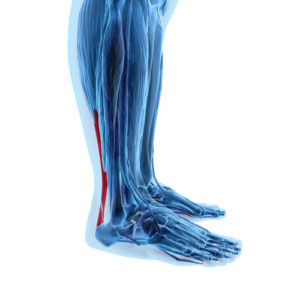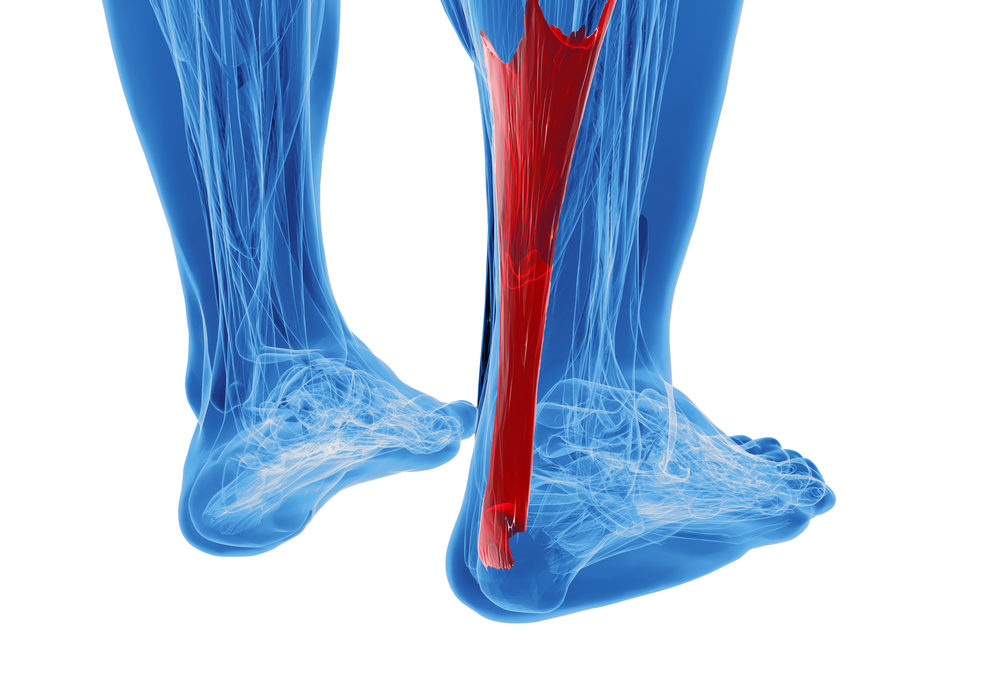“I’ve paid the price over the years, though: a lot of injuries and surgeries related to my sports career; my hips and knees took a lot of wear and tear.” — Johnny Mathis
I think we all can identify with this quote when it comes to the wear and tear on our bodies. Sports, life, work and everything else can cause our body to gradually weaken. Most of the time people won’t seek help and will try to push through while causing more damage. There is help there for all of you and we at Pain and Performance Solutions can be that help. For the purposes of this blog post, we want to cover how we can help in treating Achilles Tendonitis.

More Info on Achilles Tendonitis
Before we dive into how Pain and Performance Solutions can help in treating Achilles Tendonitis, we would like to explain what it is and what some of the symptoms might be. The Mayo Clinic website defines Achilles tendinitis as, “an overuse injury of the Achilles (uh-KILL-eez) tendon, the band of tissue that connects calf muscles at the back of the lower leg to your heel bone. Achilles tendinitis most commonly occurs in runners who have suddenly increased the intensity or duration of their runs. It’s also common in middle-aged people who play sports, such as tennis or basketball, only on the weekends.” The Achilles blood supply comes from the muscles above and the bony attachment below. The blood supply is limited at the “watershed” zone approximately 1 to 4 inches above the insertion into the heel bone. Paratendonitis and tendinosis develop in the same area.
Achilles Tendonitis Symptoms
Treating Achilles Tendonitis will start once we realize the symptoms you might be having. Here are symptoms for you to be on the lookout for and what we’ll look at. Paratenonitis presents in younger people. Symptoms start gradually and spontaneously. Aching and burning pain are noted especially with morning activity. It may improve slightly with initial activity but becomes worse with further activity. It is aggravated by exercise. Over time less exercise is required to cause the pain. The Achilles tendon is often enlarged, warm and tender approximately 1 to 4 inches above its heel insertion. Sometimes friction is noted with gentle palpation of the tendon during ankle motion. Tendinosis presents similarly but typically in middle-aged people. If severe pain and limited walking ability are present, it may indicate a partial tear of the tendon.
Diagnosis of Achilles Tendonitis
Treating Achilles Tendonitis will begin once we diagnose it. Pain and sometimes a scratching feeling may be created by gently squeezing the tendon between the thumb and forefinger during ankle motion. There may be a weakness in push-off strength with walking. Magnetic resonance imaging (MRI) can define the extent of degeneration, the degree to which the tendon sheath is involved and the presence of other problems in this area, but the diagnosis is mostly clinical.
Treatment for Achilles Tendonitis
There are two forms of treating Achilles Tendonitis, Non-Surgical and Surgical. Most cases are successfully treated non-surgically although this is time-consuming and frustrating for active patients. Treatment is less likely to be successful if symptoms have been present more than six months. Nonsurgical management includes nonsteroidal anti-inflammatory medications, rest, immobilization, limitation of activity, ice, contrast baths, stretching and heel lifts. An arch support may help if there is an associated flatfoot. A cast or brace to completely rest this area may be necessary. Extracorporeal shockwave therapy and platelet-rich plasma injections have variable reports of success. Nitroglycerin medication applied to the overlying skin may be of benefit.
Surgical treatment for Achilles Tendonitis is the other option. Surgery will be administered when all other non-surgical procedures have been attempted and unable to repair the scar tissue. Surgery consists of cutting out scar tissue and calcification deposits within the tendon. Abnormal tissue is excised until tissue with normal appearance appears. The tendon is then repaired with suture. In older patients or when more than 50 percent of the tendon is removed, one of the other tendons at the back of the ankle is transferred to the heel bone to assist the Achilles tendon with strength as well as provide better blood supply to this area.
Moving forward with Pain and Performance Solutions
With any injury, the main thing to remember is patience. Time is what it takes to completely heal. We can’t stress this enough. We’ve seen too many people rush back to life, work or sport before they are completely healed. Treating Achilles Tendonitis or any injury can’t be rushed. You will do more damage and may never recover fully. We at Pain and Performance Solutions can help in treating your Achilles Tendonitis so please contact us now. Contact us at (707) 636-4404 and Let’s start the healthy journey back to your body’s ultimate healthy state.
FAQs on Achilles Tendonitis Treatment and Recovery
1. What causes Achilles Tendonitis?
Achilles Tendonitis is often caused by overuse, especially in runners who increase their mileage or intensity quickly. It also affects middle-aged people who play sports occasionally.
2. What are common symptoms of Achilles Tendonitis?
Symptoms include pain, tenderness, and swelling in the tendon area, typically 1-4 inches above the heel. Pain can be worse in the morning or after physical activity.
3. How is Achilles Tendonitis diagnosed?
Diagnosis is usually clinical, involving physical exams, and MRI scans to determine the extent of damage if needed.
4. How long does it take to recover from Achilles Tendonitis?
Recovery varies, but non-surgical treatment can take weeks to months. Early intervention speeds up healing, while cases untreated for 6+ months are harder to resolve.
5. What are the non-surgical treatment options?
Non-surgical treatments include rest, NSAIDs, stretching, ice, contrast baths, heel lifts, and possibly shockwave therapy or platelet-rich plasma injections.
6. When is surgery recommended for Achilles Tendonitis?
Surgery is considered when non-surgical options fail, especially if symptoms persist beyond six months or if there’s a partial tendon tear.
7. What does surgical treatment involve?
Surgery removes scar tissue and calcifications from the tendon. If significant tissue is removed, another tendon might be transferred to support the Achilles.
8. Can Achilles Tendonitis heal on its own?
Mild cases may improve with rest and stretching, but untreated or severe cases often require professional intervention to avoid chronic pain.
9. Is it safe to exercise with Achilles Tendonitis?
Exercise should be limited to low-impact activities. Overuse can worsen the condition and prolong recovery.
10. How can Pain and Performance Solutions help with Achilles Tendonitis?
Pain and Performance Solutions offers personalized, non-surgical treatments focusing on safe recovery and long-term tendon health. Contact us at (707) 636-4404 to start your healing journey.


